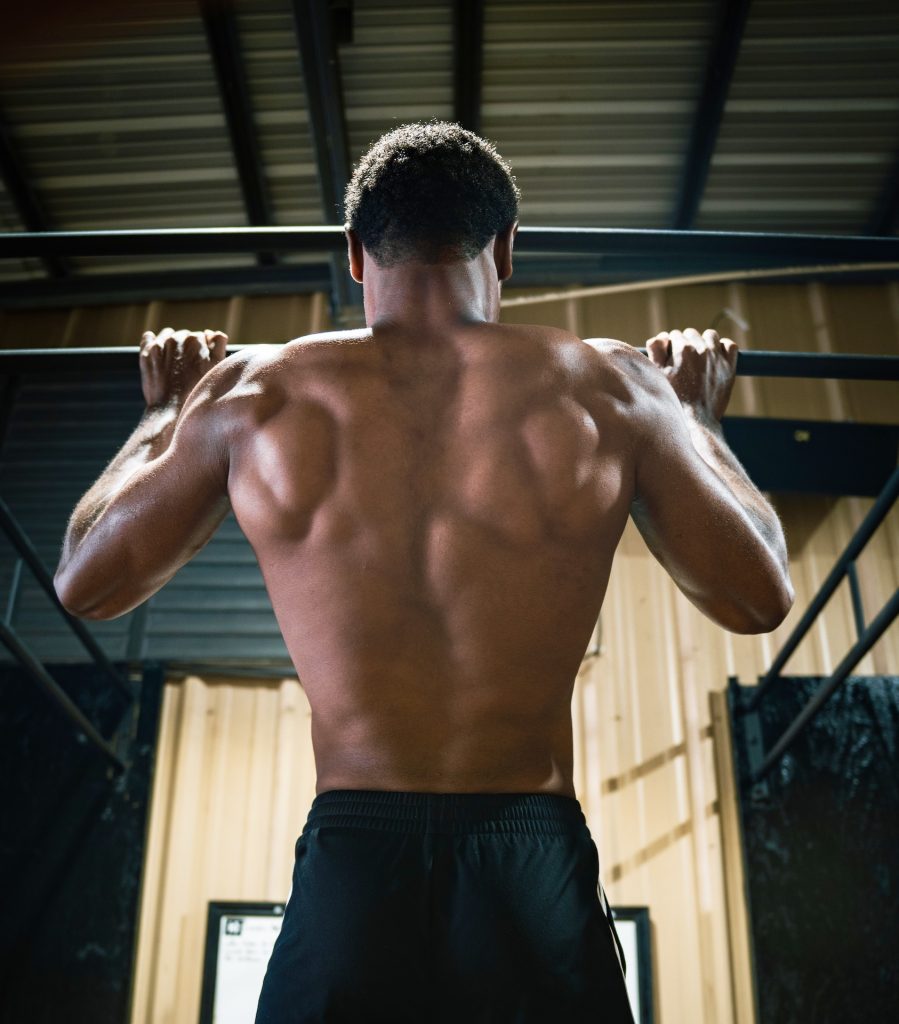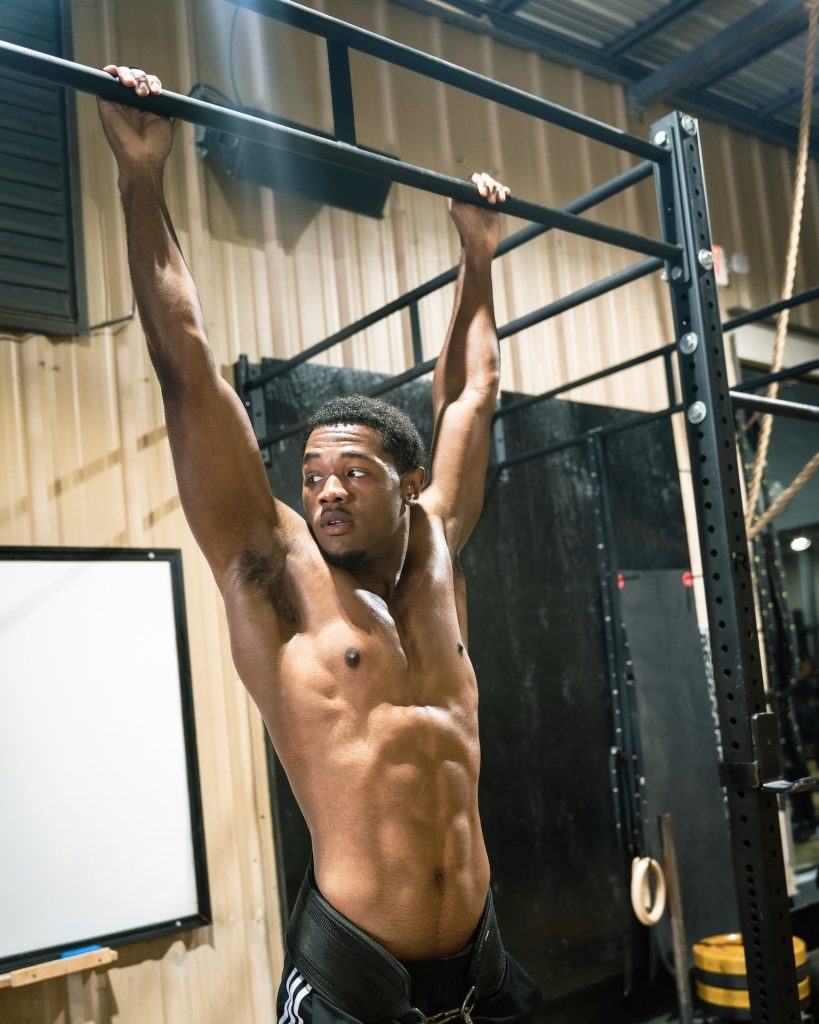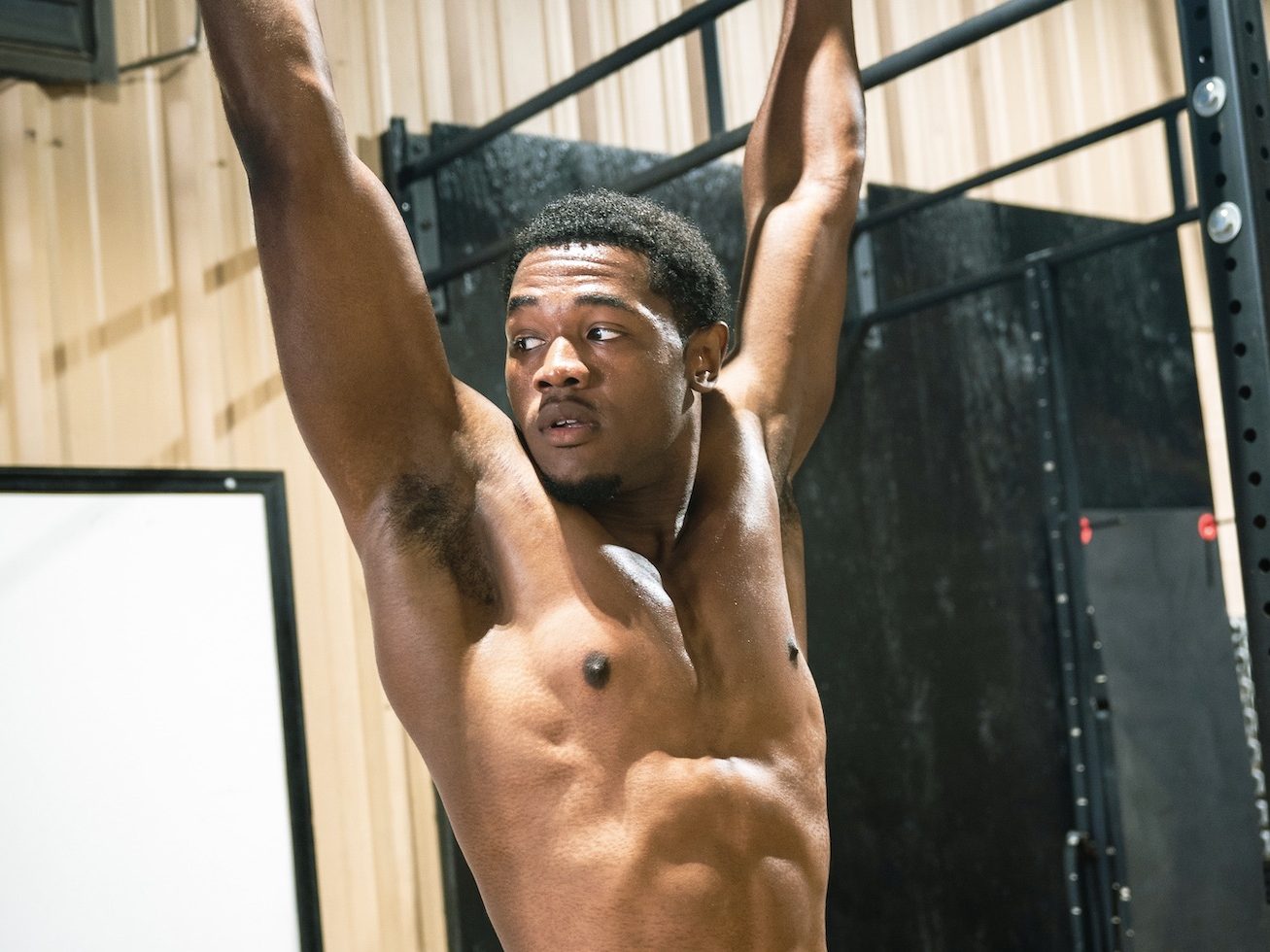Performing the pull-up is a feat very few have ever accomplished. Fit Belizean and calisthenics enthusiast Godfrey Davis shares 4 must-do exercises to get your pull-up, finally.
3 MIN READ TIME
Words, Godfrey Davis
Pics, ShotBy.Kendis
A pull-up is not the easiest thing to do, but you can accomplish it—and, while it primarily work your back, it’s a compound movement that works your entire upper body. Here’s the plan to perfect your pull-up:

1. Australian Pull-Up
What To Do It
8-12 Reps | 3 Sets (3 Stages: Easy, Medium, Hard) Rest 90 seconds each.
Why It Works
It’s the gateway for learning how to do an actual pull-up. It teaches you how to engage certain muscle groups that will be used when doing your pull-up. Also, the progressions are scaleable so it will be easier to do.
I learnt this exerise while I was trying to do the pull-up at home. I came across a version using a bed sheet and a door, but you can also use a table, a chair, or a stick balanced on some beams.
2. Wide + Close Grip Lat Pulldown
What To Do It
8-12 Reps | 3 Sets (Progressive Overload) Rest 90 seconds each.
Why It Works
It’s great for building vertical pulling strength using different grips. These are great because they’re transferable to the pull-up and the chin-up. The wide grip targets a different section of the back, mostly, the upper back, whereas the close grip targets the inner back. It’s to give you different variations to build strength. It helps because while some people may have the strength to do a wide grip pull-up, they may not have the strength to do a narrow grip pull-up. Doing both is greater than doing only one.
3. Cable Rows
What To Do It
8-12 Reps | 3 Sets (Progressive Overload) Rest 90 seconds each.
Why It Works
Cable rows are great because it’s good for building horizontal pulling strength. You’ll notice that with all these exercises we’re trying to build strength— except with the Australian pull-up; that’s more about technique. Strength is important; always remember that.
4. Dead Hangs


What To Do It
10-30 Sec | 3 Sets Rest 90 Seconds each
Why It Works
This will be for improving your grip strength and for building the endurance to hold the pull-up. You’ll notice that either your arms, your forearms, your grip, or your back will fatigue. It’s more likely that your grip will fatigue first, so for it to holdout before your back fatigues, dead hangs will be good.
When I first learnt to do a pull-up, I was at the end of the Australian pull-up progression. I was at the hardest difficulty, but it felt easy for me. So, I thought, ‘why not try the pull-up’. Upon trying, it was hard, but that was because I wasn’t doing the dead hangs at the moment. After getting better at holding the dead hangs for 30 to 60 seconds, doing one pull-up became much easier. From there, I would just practice two times weekly one pull-up, then eventually two, then three, and so forth.
